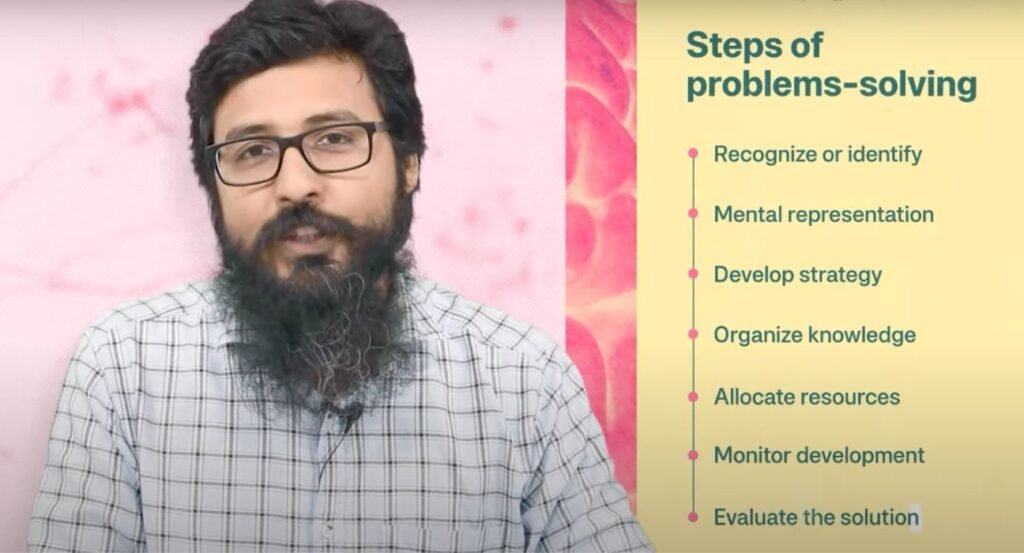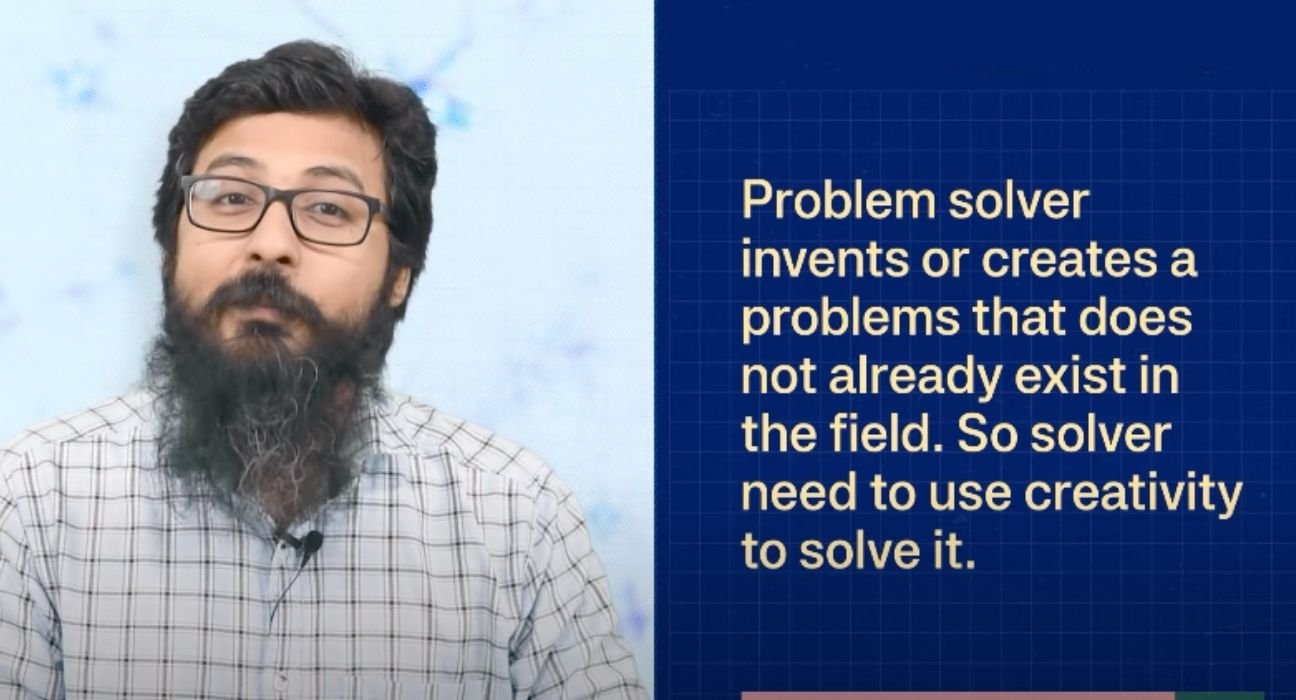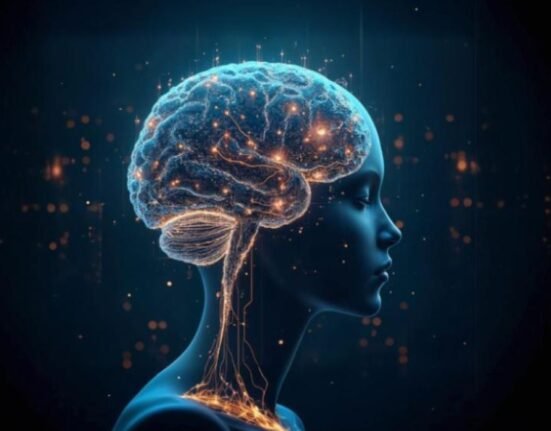Finding solutions to issues or challenges is facilitated by the critical cognitive function of problem-solving. It’s a vital life skill for stressful and demanding personal and work environments alike. This page covers the nature of problem-solving, the procedures involved, the various types of problems, and problem-solving strategies, like the use of heuristic techniques.
What is Problem-Solving?
One basic cognitive function that is vital to survival is problem-solving. It is the process by which a person, a team, or even an artificial intelligence system makes use of the knowledge at their disposal to get past challenges and solve complex problems. The ability to close the gap between our current situation and our ideal future state is the fundamental component of problem-solving.
7 Steps of Problem-Solving Process
Navigating challenges effectively requires a clear process. Scholars like Sternberg, Hayes, Bransford, and Stein have studied and identified the seven steps of the problem-solving process.
- Identify the Issue: Identify and describe the issue.
- Examine the Issue: Recognize the nature of the issue and all of its elements.
- Identify the Objectives: What do you hope to accomplish by resolving this issue?
- Create Potential Solutions: Make a mental note of every action that might be taken.
- Assess and Choose Solutions: Consider each solution’s viability, risks, and ramifications.
- Put the Solution into Practice: Put the selected solution into practice.
- Review and Consider the Outcome: Assess the result to determine what succeeded, what failed, and why.
You need to know exactly what the problem is before you can start solving it. Identifying the problem is the first step and sets the stage for everything else, so it’s really important. Some work has already been accomplished on the solution to a well-defined challenge. The next stage after identifying the problem is to comprehend it completely. This could entail dividing the issue into smaller, more manageable components, determining the underlying causes, and appreciating the context in which the problem arises.

Creating a plan to address the issue is the next critical step. This tactic could be as straightforward as an action plan or as intricate as a multi-layered, multi-step plan. It is critical to take into account the available resources, any potential limitations, and the dangers connected to certain strategies. The logical organization of information is another essential component of issue-solving. To achieve this, compile, categorize, rank, and arrange all pertinent information in a way that facilitates comprehension and analysis. Well-organized data frequently offers answers that weren’t immediately obvious.
Anticipating and preparing for Potential Roadblocks that may arise along the path of the solution is the key to effectively managing them. Prerequisites include having a vision and the capacity to anticipate potential obstacles. This stage typically calls for the development of backup plans and strategies to overcome these hurdles. The final step in solving an issue is to put the answers into practice. It needs to be planned and carried out properly. To make sure a solution is truly solving the problem, it is essential to monitor it and make any necessary adjustments.
Issue Resolution
Issue resolution is a field of study that crosses many disciplines, including engineering, management, computer science, psychology, and cognitive science. It is believed to be necessary for intelligence, learning, and flexibility. Academics like Mayer (1990) point out that solving problems entails more than just knowing the answers—it also requires applying knowledge in novel circumstances. It means applying both analytical and creative thinking to solve problems flexibly and dynamically.
The concept that problem-solving is a guided cognitive process is emphasized by Mayer’s definition. It is a concentrated effort aimed at reaching a particular objective; it is neither arbitrary nor unplanned. This procedure is especially crucial in situations where the answer is not immediately apparent and calls for the issue solver to do more than just apply or recall previously taught techniques. Problem-solving in the context of artificial intelligence is frequently linked to algorithms and heuristics that allow systems to carry out operations that would call for intelligence if carried out by people. Similarly, problem-solving is seen as a higher-order cognitive skill that supports a large portion of the learning process in educational contexts and is linked to critical thinking.
It is possible to hone and enhance problem-solving skills within the larger framework of human intellect. It is a skill that develops with practice and experience rather than being static. People are better able to solve problems and navigate the complexity of the world when they work on a variety of problems and use a range of approaches. Essentially, the ability to adapt and respond successfully to a constantly changing environment is the foundation of problem-solving. It involves reaching conclusions, passing judgment, and carrying out plans of action to accomplish particular objectives. It’s evidence of human inventiveness and our unwavering search for answers in the face of difficulties.
Read More: Cognitive Overload: Causes, Symptoms and Coping Strategies
Types of Problems
The nature of problems and the approaches taken to tackle them might differ greatly in the field of problem-solving. It is important to recognize the nature of the problem at hand since it affects how it will be solved. According to popular J. W. Getzels, we classify types of problem in three main categories:
Presented Problems
Problems that are explicitly presented to the problem solver are known as presented problems. This means that the person or group assigned to solve the problem is given the problem, its specifications, and frequently the intended result. These kinds of challenges are frequently encountered in business contexts, like a project brief from a customer, or in educational settings, such as math problems in a textbook. The primary difficulty with the challenges that are presented is accurately comprehending and interpreting the issue, followed by the use of the relevant techniques to resolve it.

Created Problems
On the other hand, problems that are created are ones that people or organizations define or create for themselves. When someone notices a difference between the desired state and the current state, this kind of issue occurs.
Often, the urge to innovate, make things better, or stop problems from happening in the future leads to difficulties. Since the problem solver must first recognize and define the issue before seeking a solution, they demand a higher degree of critical thinking.
Discovered Problems
Problems that are identified through investigation, observation, or the release of fresh data are known as discovered problems. They were unknown in advance. These issues, which might include finding a defect in software or recognizing a shift in the market that affects a business plan, can occur suddenly and need to be addressed right away. Problems that are found usually require quick action to prevent more problems, therefore solving them is done reactively.
Read More: Unlock Your Brain’s Power: Enhance Memory and Cognitive Performance
Algorithmic Strategies and Heuristics strategies
Algorithmic strategies are methodical approaches to problem-solving that follow a predetermined, step-by-step procedure to get a result that is assured. When these tactics are used on well-structured problems with well-defined objectives, paths to resolution, and consequences, they work incredibly effectively. The main benefit of algorithmic techniques is the assurance they offer; they reduce the likelihood of errors while providing a clear result. These tactics do not, however, come without disadvantages. They can take a lot of effort, and they might not work for every kind of problem—especially the ones that need more creative thinking or are poorly organized. One classic example of an algorithmic approach is the application of a well-known formula to solve a mathematical issue.
Heuristic strategies, on the other hand, provide more adaptable and less inflexible frameworks for solving problems. These techniques are especially helpful for handling complicated or poorly organized issues with ambiguous objectives or solutions. Heuristic tactics’ key benefits are their broad applicability to a wide range of issues and time efficiency. They enable problem solvers to come up with a likely solution—though not a sure thing.
The drawback of this strategy is that it does not guarantee the accuracy of the solution, which might occasionally result in mistakes or omissions. Heuristic techniques include working backward from the intended objective, means-end analysis, which divides the problem into smaller, more manageable components, trial and error, which entails testing multiple solutions and learning from the results, and drawing analogies, which involves applying the solutions from similar problems to the current one.
Trial and error, means-end analysis, working backwards, employing analogies, and segmenting the problem into smaller portions are all examples of heuristic procedures that are important components of a problem-solving toolkit. The nature of the problem at hand, the context in which it is being addressed, and the preferences and cognitive style of the individual problem solver all frequently have an impact on the technique that is chosen. Whether the solution calls for the exact application of an algorithmic method or the flexible, creative approach of heuristic thinking, an experienced problem solver can evaluate the issue and choose the best course of action.

To sum up, problem-solving is a complex talent that requires a thorough comprehension of the issue, an organized approach to addressing it, and the tactical use of several problem-solving strategies. People can become more adept at solving problems and overcoming difficult obstacles by knowing the nature of the issue, applying a methodical approach to problem-solving, and selecting the right tactics.
Read More: How Does Overthinking Impact Our Decision-Making Power?
Why We Use Heuristics
- Too Much Information: When faced with an overwhelming amount of data, heuristics assist people in focusing on the most crucial information, which speeds up the decision-making process.
- Limited Time: Heuristics provide crucial decision-making shortcuts when there isn’t much time and decisions need to be made quickly.
- Solution is Not Important: Heuristics might yield a satisfying result without requiring in-depth research in situations where determining the best solution is not essential.
- There is no information available. Heuristics aid in the process of making educated estimates based on available information when comprehensive facts are unavailable.
- Possess the Right Solution: Heuristics facilitate the rapid application of previously discovered, workable solutions to ongoing issues when they are known to exist.
Types of Heuristics
- Availability: This heuristic has people base their decisions on the information that is easiest for them to obtain, which frequently causes them to overestimate the chance of the most remembered or recent events.
- Representativeness: This refers to calculating the probability of an occurrence by contrasting it with a mental model of the past. Stereotyping and ignoring other pertinent information may result from it.
- Anchoring and Adjustment: This heuristic is applied when people make poor adjustments to their initial estimates depending on later information and place an undue emphasis on the first piece of information they come across (the “anchor”).
- Recognition: This is deciding whether or not something is familiar or identifiable. While it might help make quick decisions, it can also result in oversimplification or the disregard of new solutions.
In conclusion, problem-solving is like a toolkit for overcoming life’s challenges. It’s about understanding the problem, making a plan, and trying different ways to fix it. Think of it as a step-by-step process: first, figure out what the problem is; then, come up with a plan and try different solutions until you find one that works. You can use different strategies, like following a set plan or trying out new ideas. By practising problem-solving skills, you’ll get better at solving problems and reaching your goals.
References +
- Mayer, R. E. (1990). The Thinking Mind: A Festschrift for Ken Gilhooly. Psychology Press.
- Newell, A., & Simon, H. A. (1972). Human Problem Solving. Prentice-Hall.
- Polya, G. (1945). How to Solve It: A New Aspect of Mathematical Method. Princeton University Press.
- Sternberg, R. J., & Sternberg, K. (2017). Cognitive Psychology. Cengage Learning. This book provides insights into cognitive processes behind problem-solving and creativity which might encompass the classification of problems.
- Kahneman, D., Slovic, S. P., & Tversky, A. (1982). Judgment under Uncertainty: Heuristics and Biases. Cambridge University Press. This collection explores heuristics and the cognitive biases they can lead to, providing foundational knowledge for understanding why we rely on these mental shortcuts.
- Tversky, A., & Kahneman, D. (1974). Judgment under Uncertainty: Heuristics and Biases. Science, New Series, 185(4157), 1124-1131.
- Goldstein, D.G., & Gigerenzer, G. (2002). Models of ecological rationality: The recognition heuristic. Psychological Review, 109(1), 75-90.













Leave feedback about this